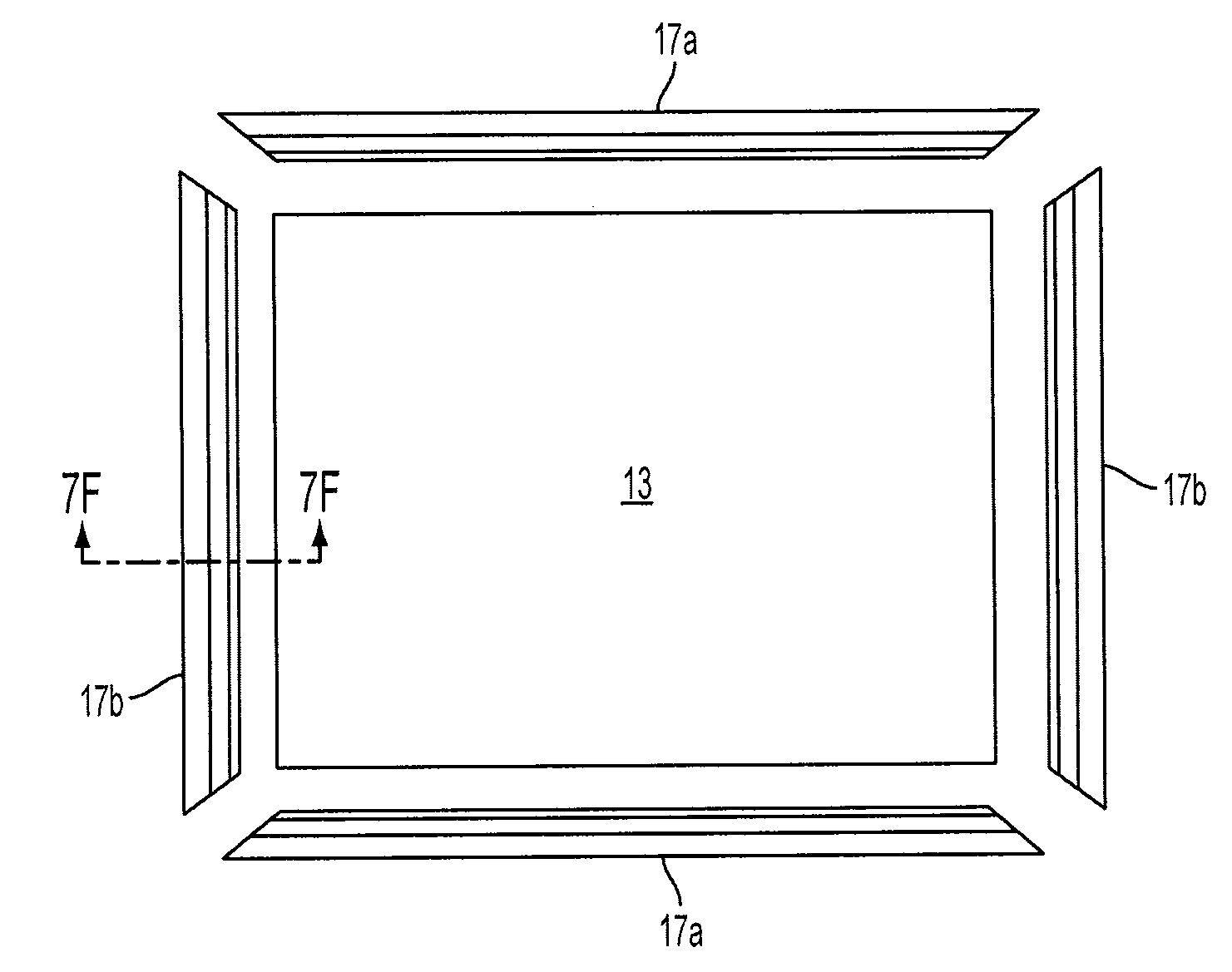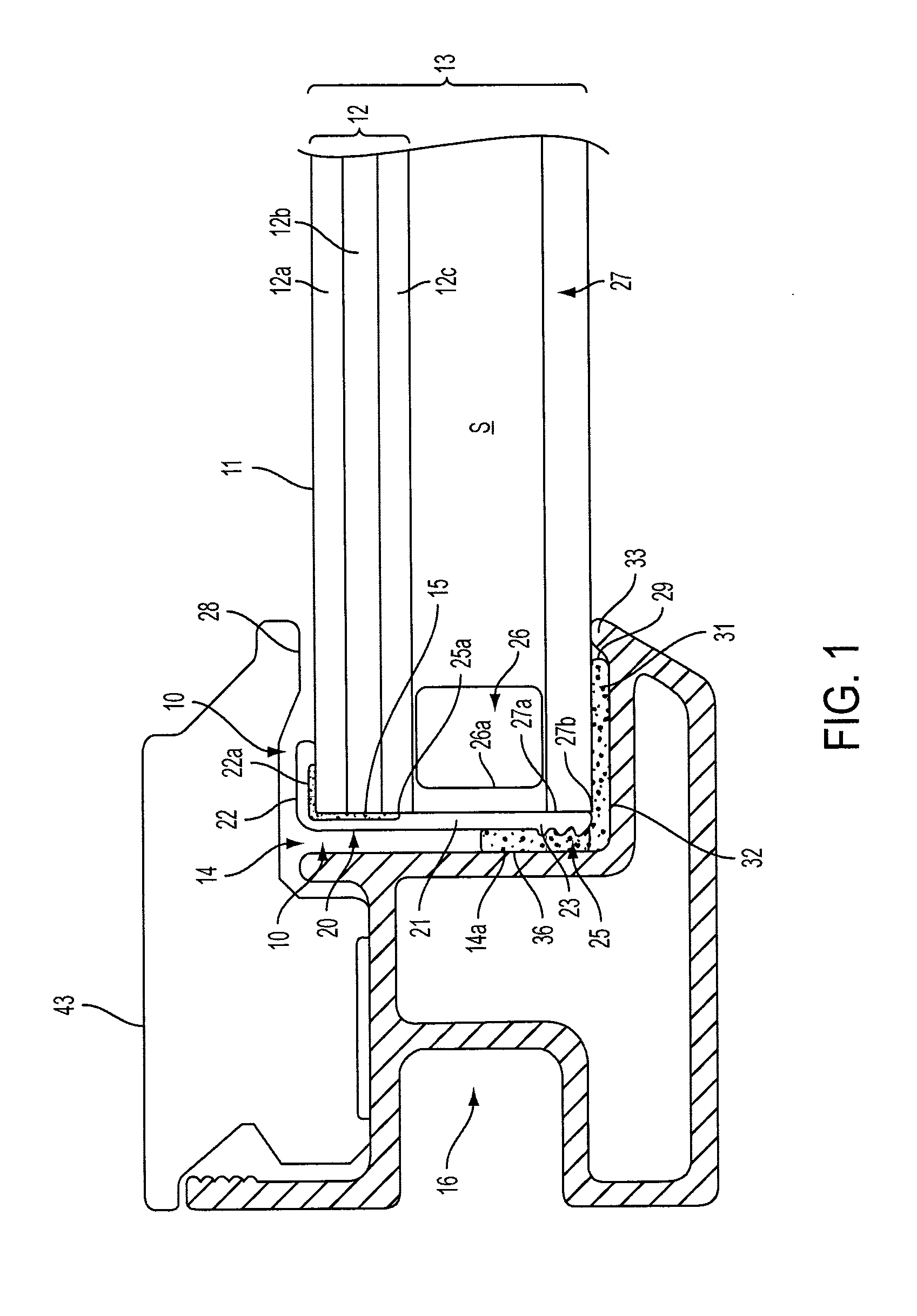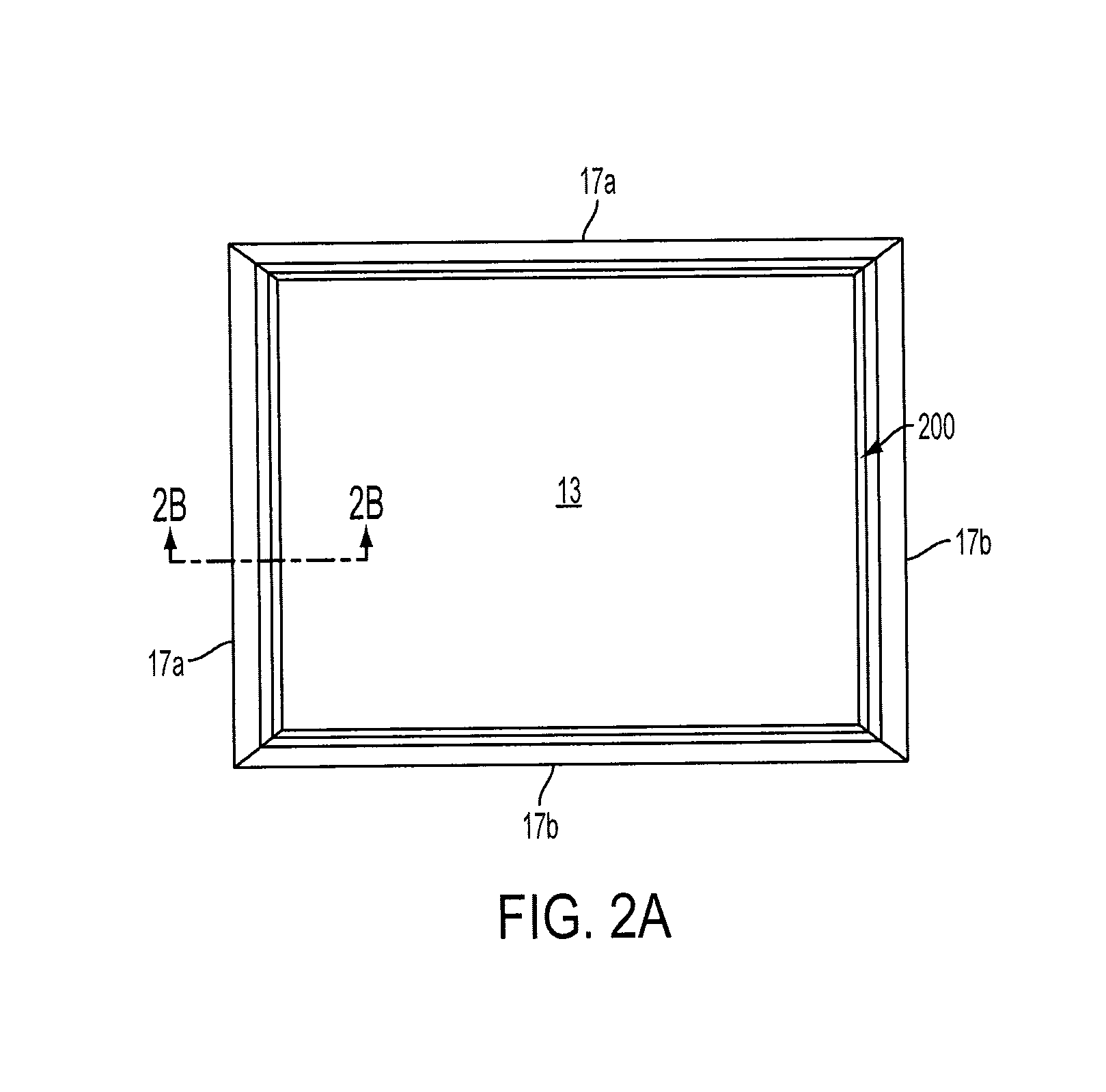Laminated glass retention system
a technology of laminated glass and retention system, which is applied in the direction of manufacturing tools, chemistry apparatus and processes, door/window protective devices, etc., can solve the problems of significant craftsmanship/skill on the part of workers, increased manufacturing time, and increased risk of damage to the environmen
- Summary
- Abstract
- Description
- Claims
- Application Information
AI Technical Summary
Benefits of technology
Problems solved by technology
Method used
Image
Examples
Embodiment Construction
[0031]The present invention generally relates to a system and method for retaining layers of glass, and in particular a laminated layer of glass of a glass subassembly that is designed to provide protection against windborne debris in a window, door or other fenestration unit that meets or exceeds applicable ASTM and TAS large and small missile impact and pressure cycling standards for coastal impact products, as well as applicable ASTM, GSA, AAMA and UFC standards for blast mitigation protection. The present invention is designed to enhance the efficiency and cost effectiveness of the manufacture of such windows, doors or other fenestration units by enabling easier and more efficient assembly of a coastal impact product that typically will include an insulating glass subassembly incorporating a laminated glass structure along the rearward side thereof. The present invention further can be incorporated into any window or door or other fenestration product that is exteriorly glazed w...
PUM
| Property | Measurement | Unit |
|---|---|---|
| temperatures | aaaaa | aaaaa |
| angle | aaaaa | aaaaa |
| length | aaaaa | aaaaa |
Abstract
Description
Claims
Application Information
 Login to View More
Login to View More - R&D
- Intellectual Property
- Life Sciences
- Materials
- Tech Scout
- Unparalleled Data Quality
- Higher Quality Content
- 60% Fewer Hallucinations
Browse by: Latest US Patents, China's latest patents, Technical Efficacy Thesaurus, Application Domain, Technology Topic, Popular Technical Reports.
© 2025 PatSnap. All rights reserved.Legal|Privacy policy|Modern Slavery Act Transparency Statement|Sitemap|About US| Contact US: help@patsnap.com



